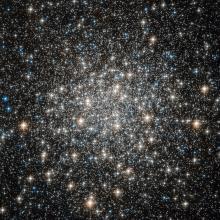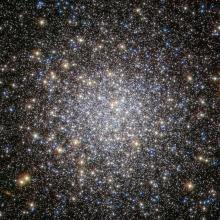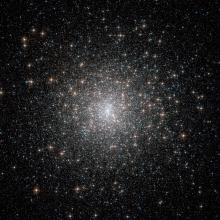Listen to today's episode of StarDate on the web the same day it airs in high-quality streaming audio without any extra ads or announcements. Choose a $8 one-month pass, or listen every day for a year for just $30.
You are here
Messier 36
Astronomers have been studying the star cluster Messier 36 for almost four centuries. Yet they still aren’t sure about its details. There’s disagreement about its distance, its age, and the number of stars it contains.
M36 is in Auriga the charioteer. The constellation is high in the eastern sky this evening. Its brightest star is Capella, one of the brighter stars in the night sky. M36 is one of four clusters to the lower right of Capella that are visible through binoculars.
Estimates of the cluster’s distance vary by hundreds of light-years, with an average of about 4,000. Star counts place its population at up to 200 stars. And estimates of its age range from about 15 million to 30 million years.
One recent study favored the lower age. In fact, it found several stars that are no more than 200 thousand years old. That suggests that even more stars could be born there in the future.
As with many other details, though, there’s some uncertainty — it’s not confirmed that the infant stars are part of M36. They’re inside a small cloud of cold, dark gas and dust. It’s on the cluster’s edge. So it could be part of M36, or it could be a separate structure that happens to be close by.
So it’s going to take more studies — and more years — to lock down the details of Messier 36.
Tomorrow: synchronizing a close pair of stars.
Script by Damond Benningfield





